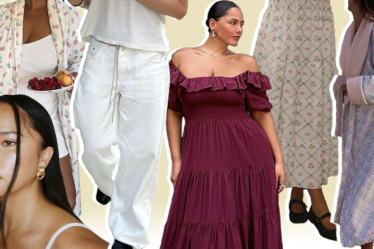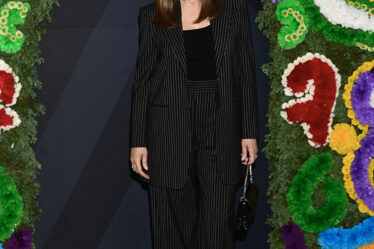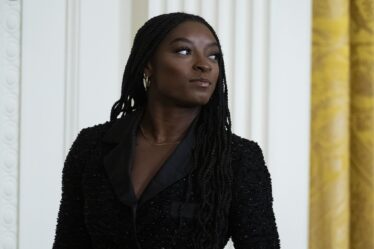A decade ago, Wayne Boich played his first-ever game of padel while on a trip to Europe. Like a combination of tennis and squash, the fast-paced sport has been popular for decades and is played professionally in Mexico, Scandinavia and Southern Europe, yet had failed to gain widespread recognition.
The American businessman was so taken by the little-known racquet sport that he had a court installed in the garden of his Miami home, which became a gathering point for the nascent padel community in the US. Last summer, he opened the doors to Reserve, a waterfront padel club in Miami.
The destination soon became a hotspot for high-profile locals. Regular visitors include David Beckham, Lionel Messi and Dwyane Wade. (Just yesterday, British Formula 1 driver Lando Norris posted pictures on Instagram of him and Boich enjoying a game of padel at the club ahead of the city’s Grand Prix this weekend.) Before long, Boich said he was fielding calls from brands looking to partner with Reserve to access its exclusive clientele. Boich ultimately went with luxury watchmaker Richard Mille to sponsor the Reserve Cup, the club’s annual pro tournament.
Reserve now operates three locations: two in Miami and one in New York’s Hudson Yards neighbourhood. Padel’s popularity is growing around the world, with 25 million active players in 110 countries. Brands from Adidas to Valentino are already cashing in on its commercial appeal, evident in its aspirational credentials: Padel is often played at exclusive members clubs, a modern and space-efficient alternative to tennis and the country-club lifestyle.
Padel doesn’t require specific performance apparel. Instead, players wear outfits similar to what they’d wear for tennis. But because the padel consumer is typically affluent and the sport is fairly new, there is a sense that those who play it are part of an exclusive club — and they often are at spots like Reserve and Padel Haus. Padel-related and club merch are worn as status symbols.
“There’s a sexiness about padel style,” said Boich. “I think that’s what led to interest from some of the bigger brands to look at collaborations or partner with us in some form.”
Luxury’s Chic Pickleball Alternative
Padel was founded by Mexican businessman Enrique Corcuera, who installed the world’s first-ever court in his Acapulco holiday home in 1969. The sport is played indoors or outdoors in a small court with an artificial turf surface, boxed in by glass walls. Games are always played in doubles (two sets of two players against each other), with racquets that are smaller and heavier than those used for tennis, while rules and score-keeping largely follow those of tennis.
It’s an addictive sport, its converts say: short, intense and social — a similar appeal to pickleball, but played in private clubs rather than on makeshift courts in neighbourhood parks.

Today, Middle Eastern and US investors are pouring billions of dollars into the sport. Qatar Sports Investments, the owner of French football giant Paris Saint Germain, acquired the World Padel Tour — the sport’s governing body — in August last year. Meanwhile, the game’s proponents are betting on it becoming an Olympic sport by 2032.
Brands are suddenly clamouring to be a part of it, from racquet equipment manufacturers like Wilson, Babolat and Adidas to a handful of savvy start-ups creating fashion-forward padel wear for the game’s growing community, such as the recently launched London-based Pulco Studios.
Meanwhile, padel is rapidly forming an important part of luxury label’s sports marketing strategies. The wealthy players of the sport and the exclusive clubs they frequent make for an easy way for brands to court VICs, or very important clients, in the top 1 percent.
In February, Valentino took over the Matcha Club in Dubai, complete with Valentino-branded courts and padel balls. After playing, guests could conveniently shop the label’s Spring/Summer 2024 collection. British luxury brand Dunhill will sponsor the inaugural invite-only Padel Classic tournament later this month at The Hurlingham Club, an exclusive sports club in West London. Last year, Prada released an all-back $2,250 padel racquet, while Versace sells a $1,500 set that includes a logo-printed racquet, case and padel balls.

These brands stand to benefit as early movers in the sport, which is still in its infancy on a global stage and has “tremendous growth potential,” according to sportswear analyst Matt Powell of Spurwink River.
An Opportunity for Retailers
It’s not just luxury houses cashing in on the padel moment.
At UK chain Sports Direct, among its best-selling products over the last two years is the £160 ($200) Slazenger padel racquet, according to Ger Wright, managing director of sports for Frasers Group. “We’ve seen a significant uptake in padel equipment since 2022, with the racquet sport’s popularity booming in the UK,” he said.
Siux, a Spanish padel equipment brand founded in 2012, grew sales 50 percent year-over-year in 2023, said global brand director Alfonso Torrón, and entered retailers in 35 new countries since the beginning of last year.
But because padel players don’t need to invest in gear aside from racquet and balls, retailers may need to work harder to convince consumers to buy padel-specific clothing and footwear, said Powell.
Adidas — which has stocked padel racquet for several years — is ramping up distribution of its padel assortment and working with professional padel players in light of the sport’s growing popularity, said Kerryn Foster, global vice president of Adidas’ specialist sports division. For instance, the German sportswear giant recently introduced padel-themed graphic tees.
The Race to Define the Padel Aesthetic
In 2020, after a 30-year-long career as a sportswear and retail executive for companies including Levi’s, Joe Middleton decided it was time to retire — or so he thought.
Shortly after, a relative of his launched Padel Social Club, one of London’s first inner-city padel venues, and needed help creating sleek performance and lifestyle clothing for the company’s staff. That project quickly developed into Pulco Studios, a fully fledged label run by Middleton and his son Charlie, creating fashion-forward performance wear that borders on streetwear, designed for padel lovers to play in as well as wear leisurely at the clubhouse afterwards.
Pulco’s best-seller is their £85 ($106) “AirCon” padel shirt, which has hyper-fast sweat-wicking qualities, Middleton said. Other popular pieces include a £140 black vent gilet, while the brand’s marketing imagery evokes that of a fashion brand lookbook rather than a sportswear brand.

“There’s this big opportunity to be the first to create an aspirational, luxury approach and feel to the sport,” said Middleton. “That applies to the pro teams, the members clubs and the clothing that goes along with it all.”
Pulco is one of a small handful of start-ups looking to be the first brands to truly capture the padel “look” and become the go-to for the sport’s growing base of players and spectators — much in the same way that heritage brands like Lacoste, Prince and Wilson came to represent the visual identity of tennis.
Reserve, the padel club, is also looking to define the padel aesthetic. It sells branded athletic and casual wear, which include sleek black tracksuit sets and white mini tennis skirts inspired by country club attire, at the club’s stores at each of its locations.
“Because padel is so new in countries like the US, there are currently no brands or star players which define the sport in the eyes of many fans,” said Mike Dorfman, founder of the New York Atlantics, a team in the US-based Pro Padel League that began competing this year and also sells branded clothing and merch.
“What’s so exciting is the ability to build a brand in a fresh sport which can put it on the map,” he said.



